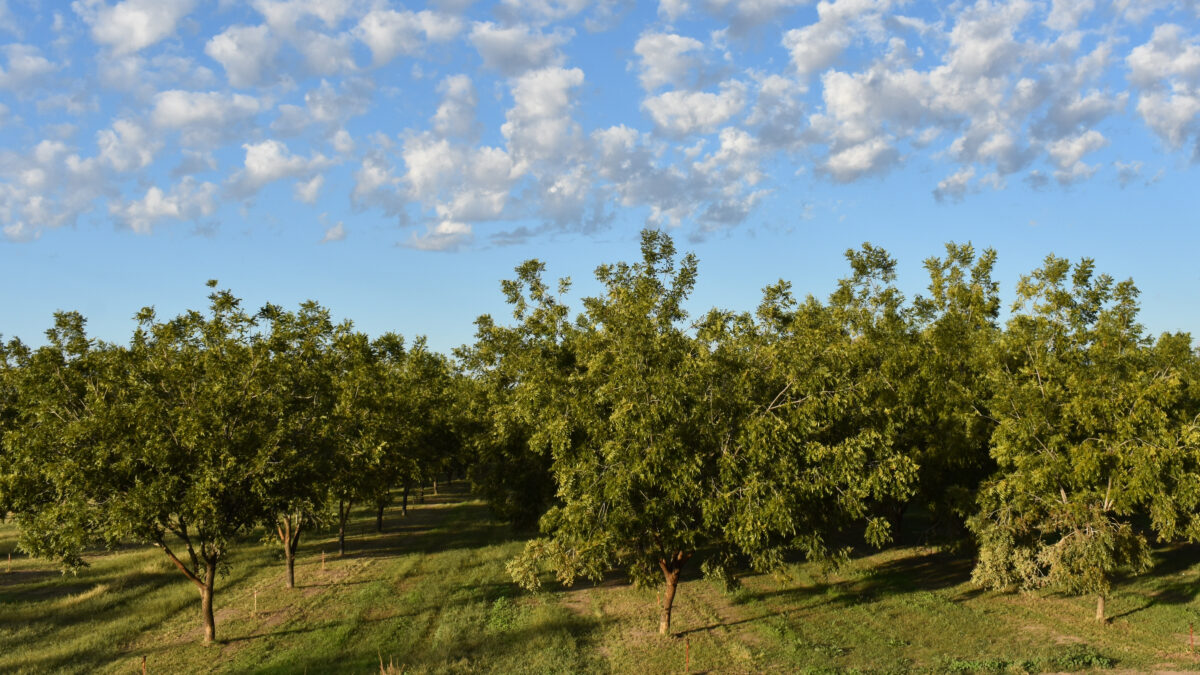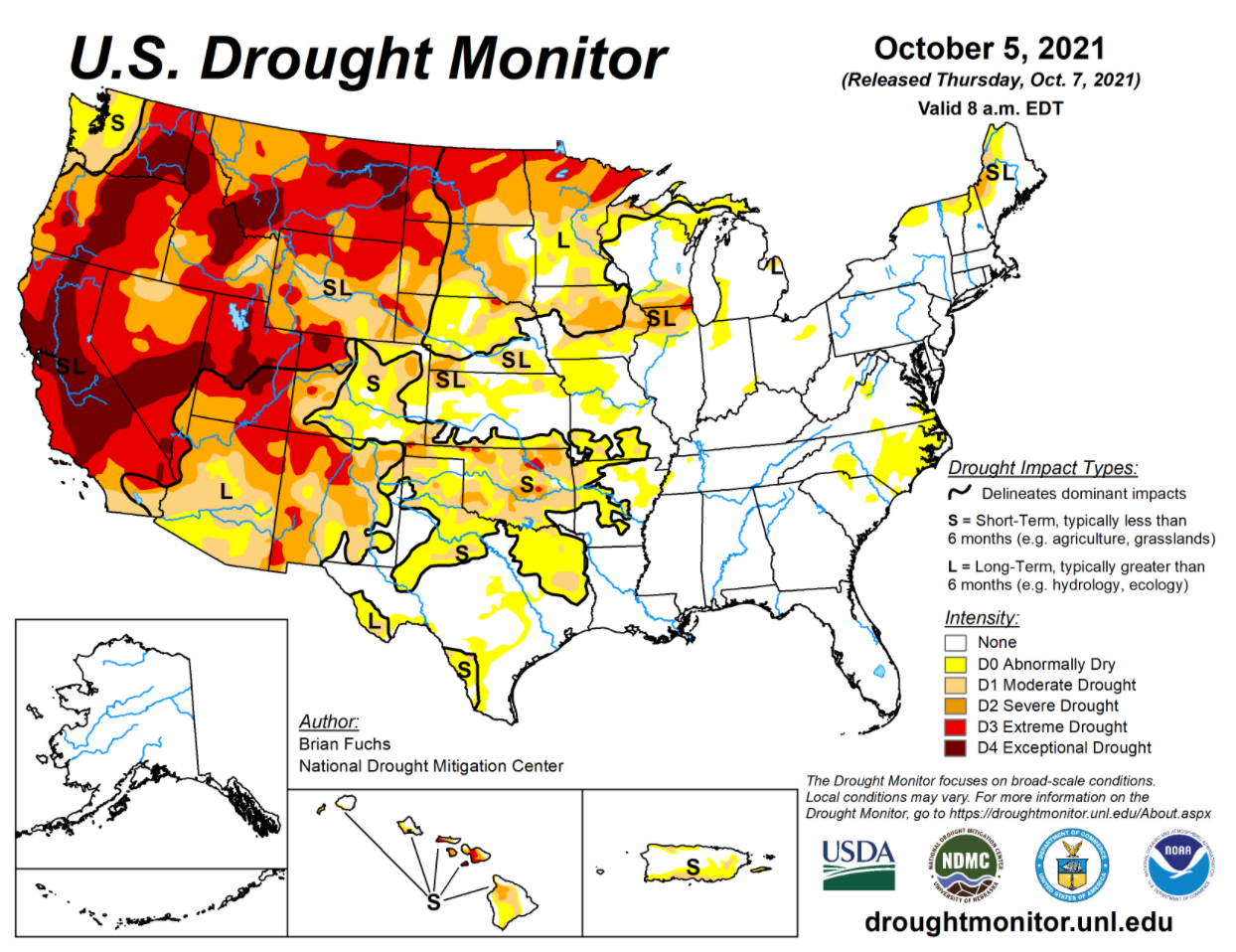Assessing Western Drought Conditions – New Mexico Pecan Producers Beating the Odds with Irrigation Innovation
TOPICS
StillFarming
photo credit: New Mexico Farm Bureau, Used with Permission
Daniel Munch
Economist
By Dalene Hodnett, Director of Communications, New Mexico Farm & Livestock Bureau
New Mexico’s diverse agriculture industry provides over $1.3 billion in dairy production by value; $102 million in onion production by value - 10% of the nation’s onion crop by value; $50 million in chili pepper production by value - 78% of the nation’s chili pepper crop by value; and numerous other crops and livestock products. As with the majority of the Mountain West, New Mexico has suffered from this season’s extensive drought. Ranchers are culling cattle and farmers are fallowing land to accommodate the lack of precipitation.
Pecan growers, though, have adapted particularly well in these conditions. New Mexico grows 35% of U.S. pecans. In fact, with over 32,000 acres of pecans, Doña Ana County, in the state’s southern region of the Mesilla Valley, is the nation’s largest pecan-producing county. It’s also a high-desert environment that has been plagued by significant dry years, so farmers have become adept at conserving precious water resources.
Pecan production in New Mexico is a story of scientific advancements and successful university research combined with a desire to maintain optimal yields and high nut quality through significantly dry years. In the desert southwest fewer than 10 inches of rain fall in a typical year and most of the 60 to 72 inches of water required annually by mature pecan orchards must be applied through irrigation. This irrigation water is primarily supplied by the Elephant Butte Irrigation District, which typically allots water throughout the growing season. This year, however, the reservoir that feeds the district fell to just 4% of its carrying capacity and water allotments were curtailed in early June.
Pecan growers are experienced in high-efficiency irrigation and were ready to supplement their surface water with groundwater. Extensive research at New Mexico State University has created techniques that allow farmers to maintain proper soil moisture. Many orchards are flood irrigated, but farmers are varying their methods for efficiency and water savings, moving to sprinklers, micro-sprays, subsurface irrigation through drip tape or drip irrigation. Drip irrigation allows precise application of water to plant roots. Small amounts of water are applied frequently to replace water withdrawn by the plant or lost by evaporation or deep seepage. Soil moisture in the area around the plant is thus maintained at a uniform level throughout the growing period. This increases growth and production potential because plants are not subjected to wet and dry cycles that normally occur with other irrigation methods. Drip irrigation simplifies irrigation procedures and minimizes distribution and evaporation losses. Less of the total soil area is wet with drip than with sprinkler and furrow systems, significantly reducing water required for irrigation. The irrigation system can be controlled automatically with a time clock and/or soil moisture sensors and automatic valves, thereby maintaining optimal soil moisture.
Many irrigation techniques are accomplished in consultation with USDA’s Natural Resources Conservation Service, which has experienced agents familiar with pecan water needs. In addition to lining ditches with concrete to increase efficiency, farmers are laser focused on soil health. Soil maintenance is integral as pecan farmers aggregate the soils to improve their water holding capacity. Many will use an excavator to create a trench line to mix the coarse and fine particles, increasing the water holding capacity.
As you can see, New Mexico’s pecan farmers are adapted to drought and by utilizing modern scientific research are able to maintain a high output with measured inputs.
Drought Monitor Update
According to the Oct. 7 release of the National Drought Mitigation Center’s U.S. Drought Monitor, nearly 75% of the West plus Minnesota, North Dakota and South Dakota are categorized as D2 (severe drought) or higher. This is a sizeable jump from the 48% of the West designated as D2 during the last week of September a year ago. More than 90% of the land area in California (94%), Montana (100%), Nevada (95%), Oregon (96%) and Utah (100%) qualifies at or above the D2 level.

